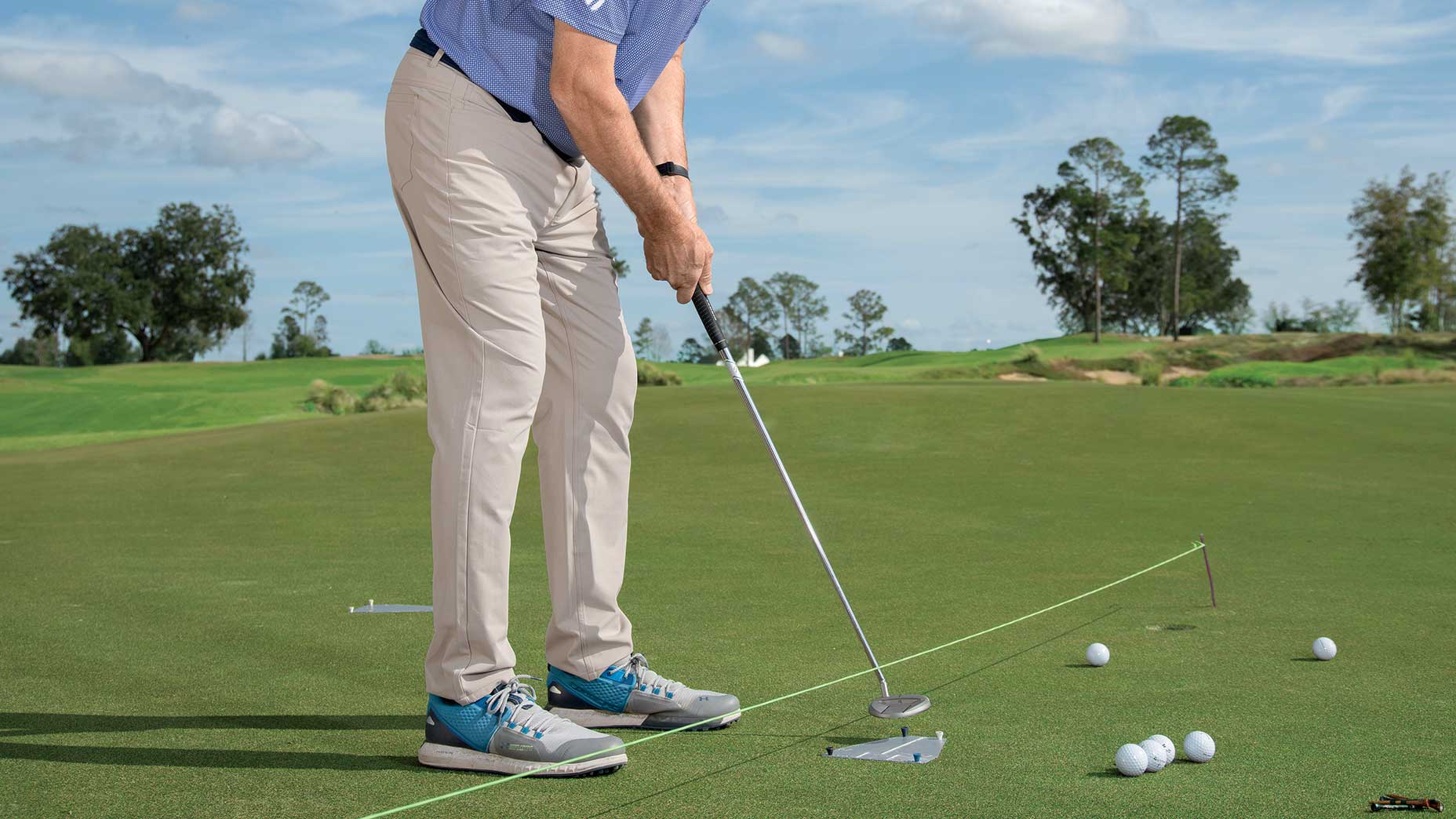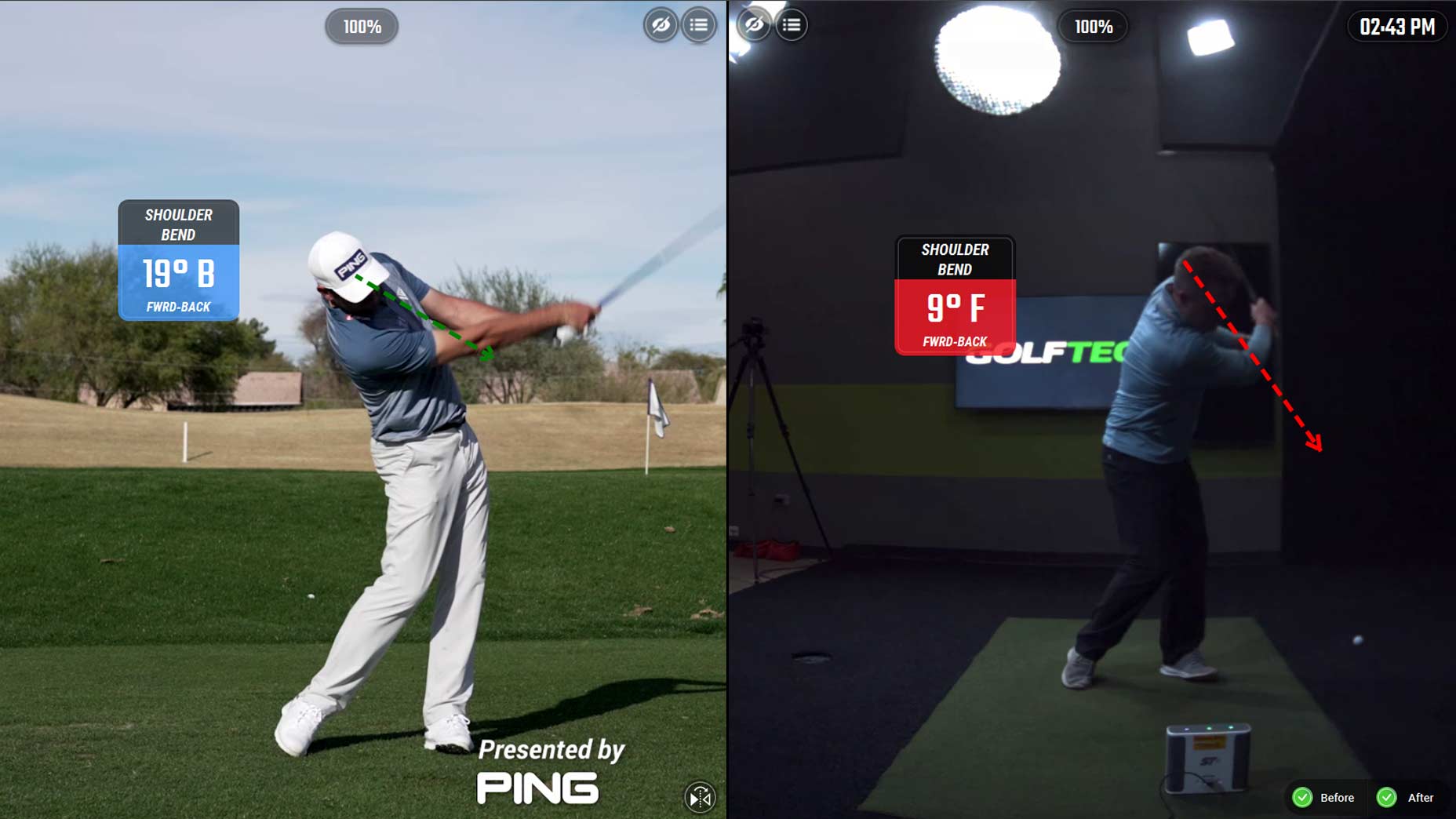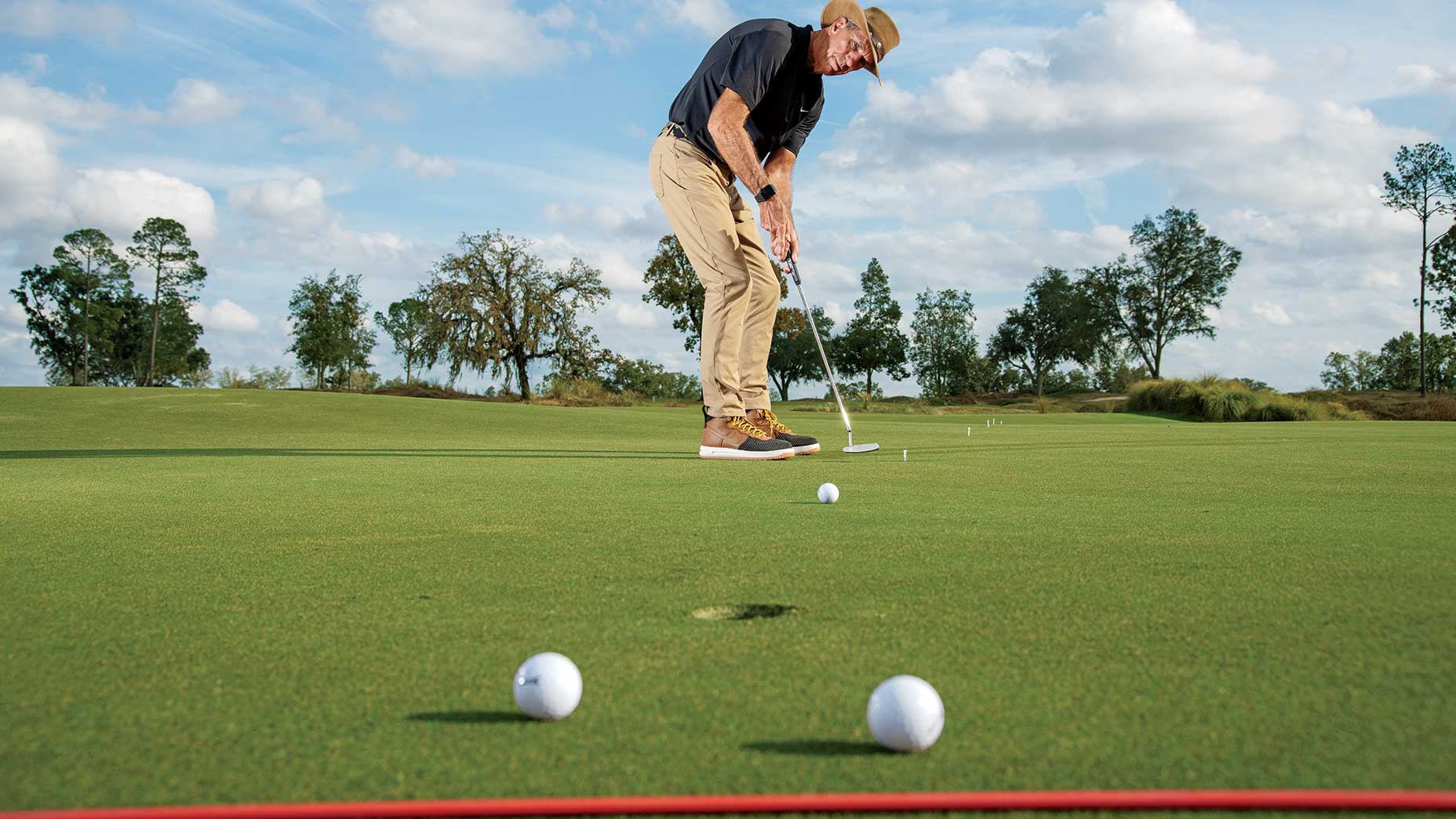There’s perhaps no faster way to improve your game than by refining your skills around the green — and that includes lag putting.
If you can manage to get the ball closer to the hole on long putts, you’ll have a much better chance of turning three-putts into two-putts — a major boon for your handicap!
But how should you go about working on lag putting? GOLFTEC instructor Brad Thorberg — along with an assist from PGA Tour player Jim Knous — is here to help.
Twenty to 30 feet is an important range for recreational players, because it represents a distance that we face often, but isn’t always a given for a two-putt.
Knous says he has a five-step process that he goes through before every lag putt, which you can read below.
5 steps to better lag putting
1. Determine whether the putt is uphill or downhill. (Confirm your belief by looking at the putt from the side.)
2. Take a look from the behind the hole to determine how the putt will break in the last five feet.
3. Determine the place you want the ball to enter the hole.
4. Then, track backwards from that entry point to your ball to determine your starting line.
5. Take one or two practice swings, visualizing the intended roll of your putt.
“On a downhill putt, I’m okay with it going two or three feet by the hole,” Knous said. “Because the one coming back is going to be slightly uphill.”
Visualizing both the pace and the line is key here, Thornberg says, as well as looking at the cup during your practice strokes instead of the ball.
Ready to shave strokes off your game? Check out the full video with Thornberg and Knous above.










